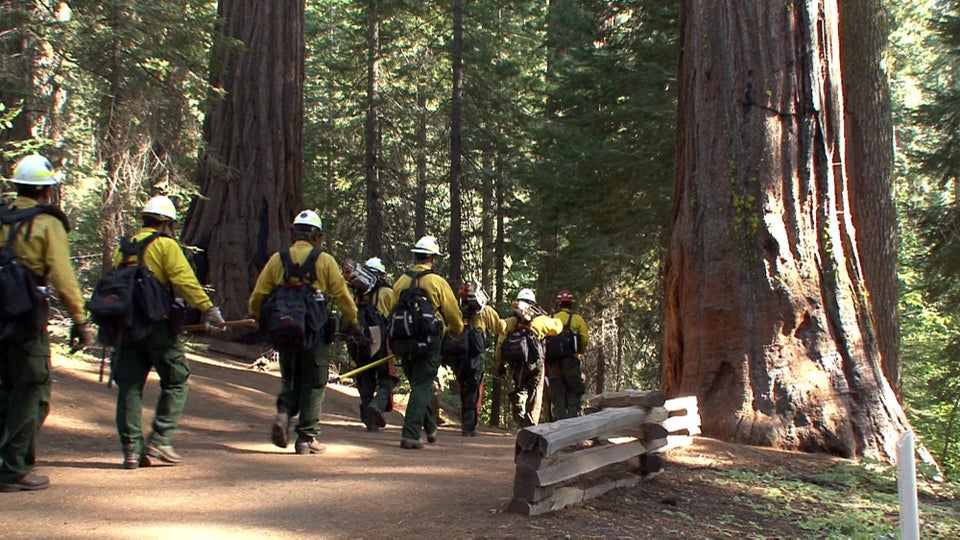
By Jonathan Kaminsky
Aug 29 (Reuters) - A massive California wildfire that has scorched an area of the Sierra Nevada mountains larger than Chicago could threaten a wooded research site scientists hope will yield clues on how best to manage forest fires.
Though the Stanislaus-Tuolumne Experimental Forest is located several miles from the northern flank of the so-called Rim Fire, the blaze's unpredictability means the open-air science laboratory could be at risk, fire incident spokeswoman Rena Escobedo said.
"The fire is not going directly at the experimental forest, but it's too early to say (it is in the clear)," Escobedo said, adding that there were no containment lines built between the leading edge of the blaze and the site.
The so-called Rim Fire, with an overall footprint that exceeds the land mass of the city of Chicago, has charred over 192,000 acres (over 77,000 hectares) and is the sixth-largest California wildfire on record.
It has burned mostly in the Stanislaus National Forest where the experimental forest is located, and has raged across a stretch of Yosemite National Park, shutting down half of the park's main east-west corridor just days before the U.S. Labor Day holiday weekend marking the end of the peak summer tourist season.
Firefighters have built containment lines around 30 percent of the blaze, which erupted nearly two weeks ago and earlier this week closed in on a reservoir that provides most of San Francisco's water supply.
At the experimental forest, U.S. Forest Service researchers have worked to recreate conditions in some places that mimic maps of the forest from the 1920s showing it had three times fewer trees but more brush, grasses and wildflowers than it does today. They have left other areas untouched.
They have been hoping the weather will be right this fall to conduct a series of controlled burns to shed new light on how the thickness and density of vegetation affects both the course of a fire and the forest's subsequent recovery, said Carl Skinner, a U.S. Forest Service geographer and fire researcher working on the project.
The study is born out of a long-emerging scientific consensus that over a century of effective wildfire suppression in the western United States has led to the growth of denser forests with less undergrowth - conditions conducive to the massive blazes like the Rim Fire, Skinner said.
"We can't go back to the past, but we can learn from it," he said. "The past is telling us that when you have fires frequently going through the forest, its helps create a lower fire hazard while allowing enough trees to survive."
Studying the rings of centuries-old trees felled in the Sierra Nevada mountains, scientists have determined that before fire suppression efforts in the western United States picked up steam in the mid-1800s, forests were hit by fires every seven to 10 years versus every 20 to 25 years today, said U.S. Forest Service Pacific Southwest Research Station spokesman Michael Sullivan.
In general, the pre-suppression fires cleared out the understory but left the forest canopy undamaged, he said. If the high-intensity Rim Fire reaches the experimental forest, the scientists' work may be lost.
"We prefer not to see years of research and study go up in smoke in an uncontrolled situation," Sullivan said. "But if that happens we will have to go in and assess the damage and use this as learning opportunity." (Editing by Cynthia Johnston, Bernard Orr)

